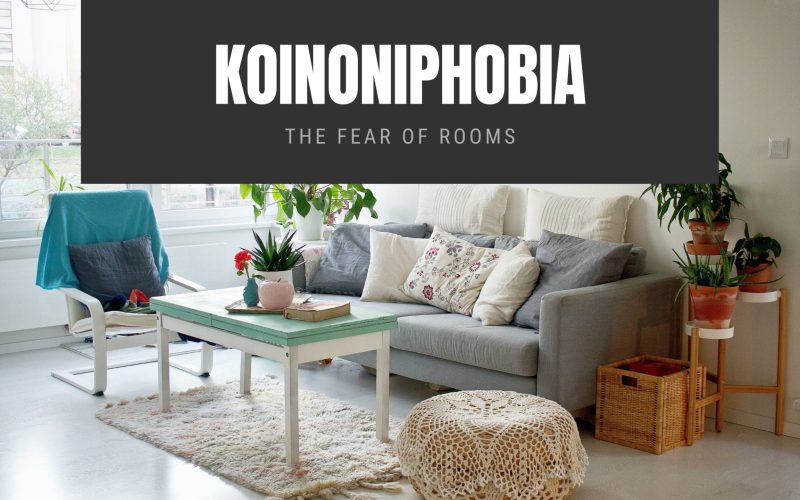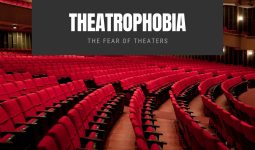It’s not impossible to be afraid of crowded places. For some people, it is a mild fear, and for others, it may be intense. In this article, we will examine the fear of sharing a room with people.
The word “Koinoniphobia” came from the combination of Greek words “koini” and “phobos,” which means “common or shared” and “fear or aversion,” respectively.
Koinoniphobia is the unreasonable and extreme fear of a group of people in rooms, and this phobia is regarded as a social phobia.
Experts believe that Koinoniphobia is related to Claustrophobia (which is the morbid fear of confined spaces).
Causes
All phobias are believed to result from some predisposing factors, which could be Intrinsic or extrinsic.
Intrinsic Factors That Can Cause Koinoniphobia
Intrinsic factors are those factors that come from the nature of the individual. This can be heredity or the genetic makeup of the person.
Traits are inheritable. Some desired phenotypical characteristics (height, good skin, beautiful eyes, etc.) can be obtained, as can undesired traits (dwarfism, skin prone to skin problems, etc.).
However, medical conditions such as Koinoniphobia are inheritable from ancestors as well.
Extrinsic Factors That Can Cause Koinoniphobia
These are factors that result from an individual’s surroundings. In this case, these factors include traumatic experiences and background upbringing.
Traumatic experiences
These are past experiences that can repeatedly trigger you into having anxiety and maybe depression.
Traumatic s can make someone develop Koinoniphobia if the person must have had an unpleasant experience in a room full of people, perhaps a bullying incident, a fight, or killing.
The memory of such events is tough to forget; thus, being in a room full of people or thinking about it may remind you of the unpleasant experience, which could trigger a panic attack.
Background Upbringing
Being raised by people with this condition or growing up in an environment where this condition is common can make you see reasons why you should be afraid of being in a room full of people.
Symptoms
Having Koinoniphobia is characterized by some awful symptoms. Individuals with Koinoniphobia experience symptoms that vary across them depending on how severe the conditions are.
Koinoniphobia is a social phobia with physical and psychological symptoms, which proves that this medical condition affects both the physical and mental well-being of an individual.
Physical Symptoms
These are symptoms proving that Koinoniphobia does not spare the physical well-being of an individual. These distressing physical symptoms come as a result of the panic attacks the individual may be already going through.
They may occur at any time without any warning, and they include:
- Sweating
- Shaking
- Hot Flushes
- Feeling of choking
- Heartbeat Palpitations
- Butterflies sensation in the stomach
- Nausea
- Headaches
- Dizziness
- Feeling of faint
- Nervous numbness
- Dry mouth
- Pressing need to go to the toilet
- Ringing or buzzing sounds in the ears
- Disorientation
- Hyperventilation
- Sharp chest pain
- Difficulty breathing
- High blood pressure
Psychological Symptoms
A person suffering from a terrible case of Koinoniphobia may experience a full-blown panic attack resulting in the following psychological symptoms:
- Fear of losing control
- Fear of fainting
- Dread feelings
- Fear of death or dying
- Fear of harm
- Fear of illness
- Feeling of guilt
- Feeling of shame
- Self-blame
- Social withdrawal
- Feeling sad
- Feeling of hopeless
- Depression
- Feeling disconnected
- Confusion, difficulty concentrating
- Anger, irritability, mood swings
- Anxiety and fear
There are rare cases where an individual suffers what we call “complex phobias,” which are phobias interlaced together, for example, Koinoniphobia intertwined with fear of being in a house, fear of the dark, fear of people, etc., giving rise to many independent chains of the symptoms of koinoniphobia with the symptoms of the other phobias.
These rare cases are highly detrimental to an individual’s total well-being, and they leave the individual unable to have a healthy social life—to create and sustain relationships with others—and a personal life—to have a successful intrapersonal relationship with oneself and to be able to handle one’s emotions very well.
This also makes the individual unable to control the average daily tasks that he or she was used to.
Treatments
The symptoms of Koinoniphobia are so dreadful that they cause the individual to develop an avoidance behavior, which serves as a coping mechanism for them.
However, we all know they cannot run away from their source of fear forever; they cannot afford to avoid writing exams with others in a room, entering an elevator full of people when they are late, or preventing a meeting at work with other co-workers or employees, etc.
These are instances where the avoidance mechanism may not be applied because it is impossible. Experts are sure that the avoidance mechanism is not the best way of handling Koinoniphobia.
As detrimental and limiting as this condition is, it is manageable and treatable. There are effective treatments available for the treatment of Koinoniphobia.
- Medications
- Therapeutic approach
Medications
These are substances taken to control anxiety when the body is triggered.
These substances are of three main types: antidepressants, tranquilizers, and beta-blockers. They should never be administered outside your doctor’s knowledge and, when prescribed, should be taken strictly based on the doctor’s prescription.
However, it is not the cure for any phobia, and it may cause some side effects to some individuals. Worst still, it can cause dependency and addiction in many individuals; thus, it should only be used for a short period.
Therapeutic approach
This approach is applied with the professional help of a psychotherapist to help the client get the desired results; in this case, it is to help the client be free from the fear of rooms full of people. This approach includes the following:
Talking Therapy
This form of treatment involves you and your trained therapist working together to influence the line of thought that causes you to fear. This may seem like small or deep talk, but it is highly effective.
Cognitive-behavioral Therapy (CBT)
Fear is known to distort our perceptions despite being aware of reality. Cognitive-behavioral therapy is a treatment aimed at helping you identify whether you have the correct view of reality or your opinion is distorted to help you adopt coping strategies in facing and overcoming your fears.
For instance, if you are Koinoniphobic, CBT can help you identify whether you have a real view of reality to justify your fears of rooms full of people or a distorted view of reality, which proves that your fear of rooms full of people is irrational. With the help of CBT, you will help you correct those bent perceptions.
The treatments mentioned above are recommended and deemed effective; However, those treatments depend on the patients and how severe their case of Koinoniphobia is. While some people may quickly recover, others may take longer to return to normal lives.
We hope that this article has been helpful to you. Please check out other phobia-related articles on our site and also leave a comment below.








